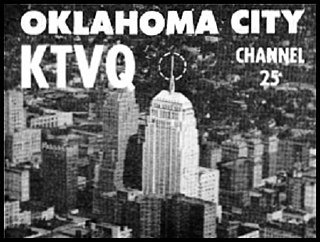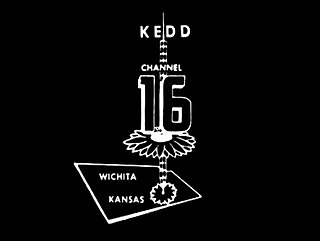
WSJV is a television station licensed to Elkhart, Indiana, United States, serving the South Bend area as an affiliate of the digital multicast network Heroes & Icons. It is owned by Gray Television alongside NBC affiliate WNDU-TV. Both stations share studios on the University of Notre Dame campus along State Road 933 on South Bend's north side, while WSJV's transmitter is co-located within the WSBT-TV site on Ironwood Road in South Bend.

WCSH is a television station in Portland, Maine, United States, affiliated with NBC and owned by Tegna Inc. The station's studios are located on Congress Square in Downtown Portland, and its transmitter is located on Winn Mountain in Sebago. Together with WLBZ in Bangor, which simulcasts most of WCSH's local newscasts, it is known as News Center Maine.

WFUT-DT is a television station licensed to Newark, New Jersey, United States, serving as the UniMás outlet for the New York City area. WFUT-DT is owned and operated by TelevisaUnivision alongside Paterson, New Jersey–licensed Univision station WXTV-DT. The stations share studios on Frank W. Burr Boulevard in Teaneck, New Jersey, and transmitter facilities at the Empire State Building in Midtown Manhattan. The programming of both stations and True Crime Network is simulcast to Long Island and southern Connecticut from WFTY-DT, broadcasting from Middle Island, New York.

WVIR-TV is a television station in Charlottesville, Virginia, United States, affiliated with NBC and The CW Plus. Owned by Gray Television, the station has studios on East Market Street in downtown Charlottesville, and its primary transmitter is located on Carters Mountain south of the city.
WNED-TV is a PBS member television station in Buffalo, New York, United States. It is owned by the Western New York Public Broadcasting Association alongside NPR member WBFO and classical music radio station WNED-FM (94.5). The three stations share studios in Horizons Plaza at 140 Lower Terrace in downtown Buffalo; WNED-TV's transmitter is located in Grand Island, New York.

WCOV-TV is a television station in Montgomery, Alabama, United States, affiliated with the Fox network. It is owned by Allen Media Broadcasting alongside Troy-licensed Cozi TV affiliate WIYC and low-power local weather station WALE-LD. The stations share studios on WCOV Avenue in the Normandale section of Montgomery, while WCOV-TV's transmitter is located southeast of Grady along the Montgomery–Crenshaw county line.
WKLO-TV was a UHF television station in Louisville, Kentucky, United States, that operated from October 18, 1953, to April 20, 1954.

KTVQ, UHF analog channel 25, was an ABC-affiliated television station licensed to Oklahoma City, Oklahoma, United States, which operated from November 1, 1953, to December 15, 1955. The station was owned by the Republic Television and Radio Company. KTVQ's studios were located on Northwest 19th Street and North Classen Boulevard in northwest Oklahoma City's Mesta Park neighborhood, and its transmitter was located atop the First National Bank Building on North Robinson and Park Avenues in downtown Oklahoma City.

WROV-TV was a television station on ultra high frequency (UHF) channel 27 in Roanoke, Virginia, United States. It broadcast from March 2 to July 18, 1953, becoming the first UHF station in the United States to cease broadcasting. Its failure was the first of many in the early days of UHF television, which was hindered by signal issues in mountainous areas and the lack of UHF tuning on all television sets—a problem not resolved until the All-Channel Receiver Act took effect in 1964.
WGBS-TV was a television station that broadcast on channel 23 in Miami, Florida, United States, from 1953 to 1957. Originally established as WFTL-TV in Fort Lauderdale, it moved south to Miami when it was purchased by Storer Broadcasting at the end of 1954 and consolidated with a construction permit Storer bought for a Miami station.
WNAO-TV, UHF analog channel 28, was a CBS-affiliated television station licensed to Raleigh, North Carolina, United States. Owned by the Sir Walter Television Company, it was the first television station in the Raleigh–Durham area and the first UHF television station in North Carolina, broadcasting from July 12, 1953, to December 31, 1957. The station closed because of the establishment of higher-powered, more accessible very high frequency (VHF) television stations in the region.
WKNY-TV was a television station in Kingston, New York, United States, which served the Hudson Valley from May 1954 to July 1956. Owned alongside radio station WKNY, it broadcast from studios and a transmitter site in Port Ewen, south of Kingston. Economic issues inherent with early ultra high frequency (UHF) stations led to its demise. It was approved to move to channel 21 but never did so.

KEDD, UHF analog channel 16, was an NBC-affiliated television station licensed to Wichita, Kansas, United States that operated from August 15, 1953, to April 30, 1956. It was the first television station based in Wichita, though stations could be picked up from nearby Oklahoma as early as 1949 with a high enough antenna. The station's studios were located at 2815 East 37th Street North.
KMPT, UHF analog channel 19, was a dual ABC/DuMont-affiliated television station licensed to Oklahoma City, Oklahoma, United States, which operated from November 22, 1953 to February 4, 1955. Owned by KLPR Television, Inc., it was a sister outlet to radio station KLPR. KMPT's studios were located on Southwest 28th and West Commerce Streets in southwest Oklahoma City's Capitol Hill neighborhood, and its transmitter was located on East Britton Road and North Lincoln Boulevard in northeast Oklahoma City.

WENS was a television station broadcasting on ultra high frequency (UHF) channel 16 in Pittsburgh, Pennsylvania, United States, from 1953 to 1957. An ABC and CBS affiliate, it was one of two early UHF television stations in Pittsburgh. The arrival of stronger very high frequency (VHF) stations and struggles generally applicable to UHF broadcasting in the early years of television prompted the station to close and sell its technical facilities to educational broadcaster WQED for use as a second educational channel, WQEX.
WNEX-TV, known as WETV from 1953 to 1954 and WOKA in May 1955, was a television station on channel 47 in Macon, Georgia, United States. It was the first station on the air in Macon and held an affiliation with NBC throughout its existence; it initially was also affiliated with ABC. The station's studios and transmitter were located along Pio Nono Avenue.
WPMT was a television station in Portland, Maine, United States. It operated from August 30, 1953, to December 15, 1954, and was the first television station in Portland. Much of its programming was also rebroadcast on WLAM-TV in Lewiston–Auburn, which broadcast from November 26, 1953, to March 25, 1955; the two stations were known as the Maine Television Network. Like many early UHF television stations, the arrival of VHF stations—in this case WCSH-TV, WGAN-TV, and WMTW-TV—took away network programming and economic viability from the UHF outlets.
WBUF-TV was a television station that broadcast on ultra high frequency (UHF) channel 17 in Buffalo, New York, United States. It broadcast from August 17, 1953, to February 1955 and again from March 1955 until the morning of October 1, 1958.
WTOB-TV was a television station on ultra high frequency (UHF) channel 26 in Winston-Salem, North Carolina, United States, owned by the Winston-Salem Broadcasting Company. The first station on the air in Winston-Salem, it broadcast programming from ABC and operated from September 26, 1953, to May 11, 1957. It was hampered by economic difficulties common to early UHF television stations. After closing, the Winston-Salem Broadcasting Company joined with the Sir Walter Television Company of Raleigh, which owned the similarly shuttered WNAO-TV there, and residents of High Point to win the construction permit for and build WGHP. The transmitting tower used by WTOB-TV in Winston-Salem remained an area landmark for a decade after it shut down.

WLEV-TV was a television station in Bethlehem, Pennsylvania, United States. Owned by Associated Broadcasters Inc. alongside WEST, the station telecast from 1953 to 1957. It was the first station in the Lehigh Valley, which at one point had three local UHF outlets. However, the station ultimately suffered from many of the same economic problems that occurred at other early UHF television outlets, and largely due to competition from very high frequency (VHF) stations in Philadelphia, WLEV left the air at the end of October 1957.










